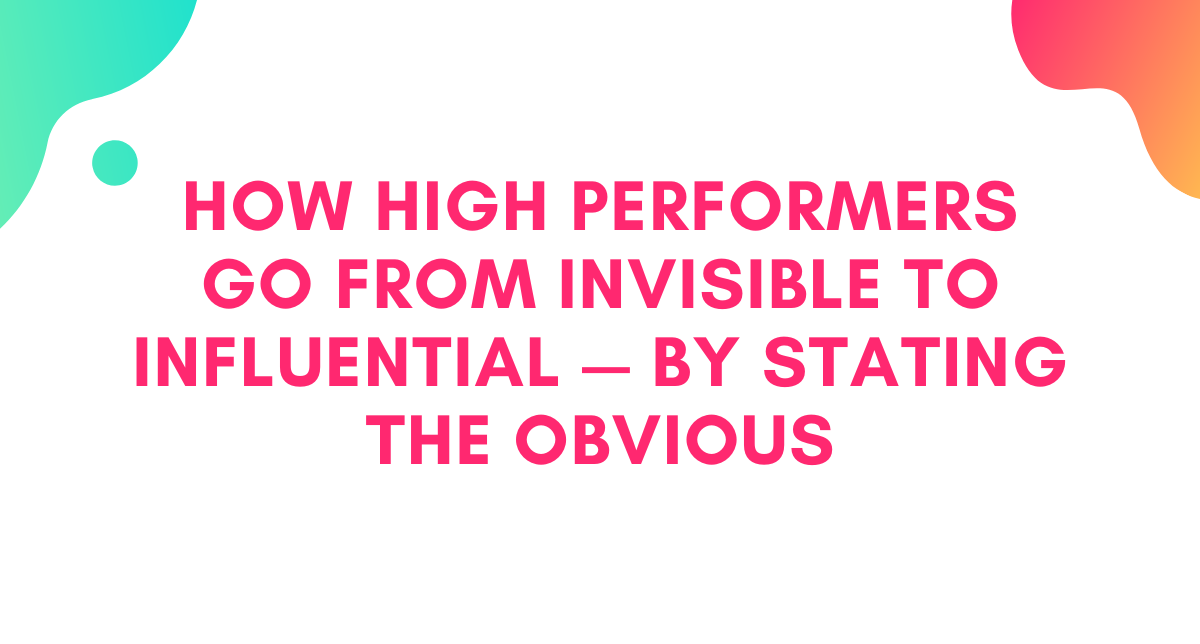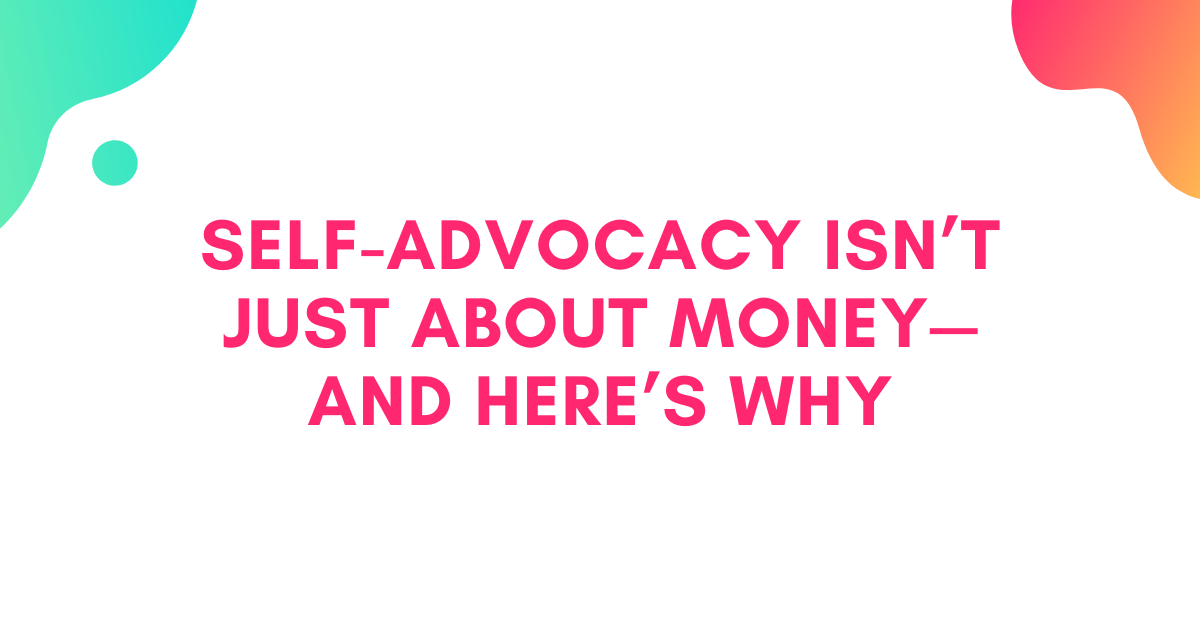How High Performers Go From Invisible to Influential: By Stating the Obvious
The Paradox of High-Performers
Do you ever feel "desensitized" to your accomplishments?
Like everyone who matters probably already knows, since they're CC'd on your Monday updates or sit in on your monthly strategy sessions.
So it feels redundant, maybe even cocky, to restate the boringly obvious magnitude and impact of your contributions (which, in your mind, substantiate why you should've been promoted last review cycle, and you feel frustrated that the promotion went to Disappointing Steve instead of you).
A client of mine, a woman of color leading a marquee product for a multibillion-dollar company, felt this way.
She assumed her internal stakeholders were just as "desensitized" to her work as she was.
I pointed out,
“Maybe. And maybe it’s you who’s desensitized. Have you considered you could be desensitized to your own brilliance? That what’s obvious to you is rarely top-of-mind to decision-makers?”
My client nodded in agreement.
Why Self-Advocacy Feels Awkward to Over-Performing Women
For many women of color in corporate settings, self-advocacy can feel like risking taboo.
The taboo of being the "unlikeable" woman, too confident, too self-focused, too much.
But here's what we miss when we hold back:
Self-advocacy is the opposite of bragging.
It’s not self-inflation—it’s truth-telling.
It’s bringing visibility to the real scope and impact of your work—especially when it feels redundant or uncomfortable.
🎧 Rapid-fire case study: In a 10-minute podcast episode, another client shares how reframing “advocating” as “informing” helped her land her dream role.
Listen here → Informing, Not Bragging: A Success Story https://podcast.jamieleecoach.com/2033808/episodes/17862689-promotion-playbook-series-part-3-informing-not-bragging-a-success-story
In coaching, my client and I built three self-advocacy plans for three different audiences—each designed to “state the obvious” strategically.
1️⃣ Skip-Level Boss
Goal: Frame a growth conversation around what matters most to leadership (numbers, efficiency, outcomes).
Approach:
“Here’s how I’ve improved process efficiency and delivered X impact. I’d like to explore next-level opportunities to expand that impact.”
Why it works: Senior leaders rarely see your full scope. Anchoring in metrics makes your value visible.
2️⃣ Cross-Functional VP
Goal: Build empathy and sponsorship across business units.
Approach: Shift from “What do you think I should do?” → “What would you do if you were in my shoes?”
Why it works: This invites perspective-taking, not advice-giving—creating partnership instead of transaction.
3️⃣ Peers and Potential Sponsors
Goal: Expand opportunities for internal mobility and future roles.
Approach:
“I currently lead strategic initiatives that impact [X area]. As I think about my growth, I’m interested in leadership paths that develop my strategy and people-development skills.”
Why it works: It frames ambition as contribution and keeps alignment with organizational goals.
Key Takeaways
💡 What’s obvious to you isn’t always visible to others.
🧠 Repetition builds recognition—the more you articulate your value, the easier it is for others to echo it.
💬 Specificity beats modesty—anchor your advocacy in facts, real outcomes, and the future possibility they point to.
🚀 Ask better questions—replace “What should I do?” with “If you were in my position, what would you do?”
Sample Language for Your Next Conversation
“I’d like to bring you up to speed on recent results and discuss the possibility of advancing to the next level. I’m appreciative of the opportunity I've had to lead X and drive Y impact, and I’d value your thoughts on how I can continue to grow.”
or
“What I’ve really enjoyed is providing strategy and continuity that’s helped sustain success across [key area]. As I think about my growth, I’d love to explore opportunities that stretch my strategy and people-leadership skills.”
The Mindset Shift
Self-advocacy isn’t about proving your worth. It’s about making the invisible visible—naming what you already do, already know, and already create.
Because when you “state the obvious,” you give others the language to recognize your excellence— and the permission to reward it.
Ready to turn your quiet excellence into visible impact?
If you’ve ever felt unseen despite your results, I can help.
Together, we’ll build a neuroscience-informed, word-by-word communication plan that helps you advocate for yourself with calm, service-oriented confidence—without ever sounding arrogant.
👉 Book a free hour-long consult with me today and let’s design your next-level self-advocacy strategy: jamieleecoach.com/apply




